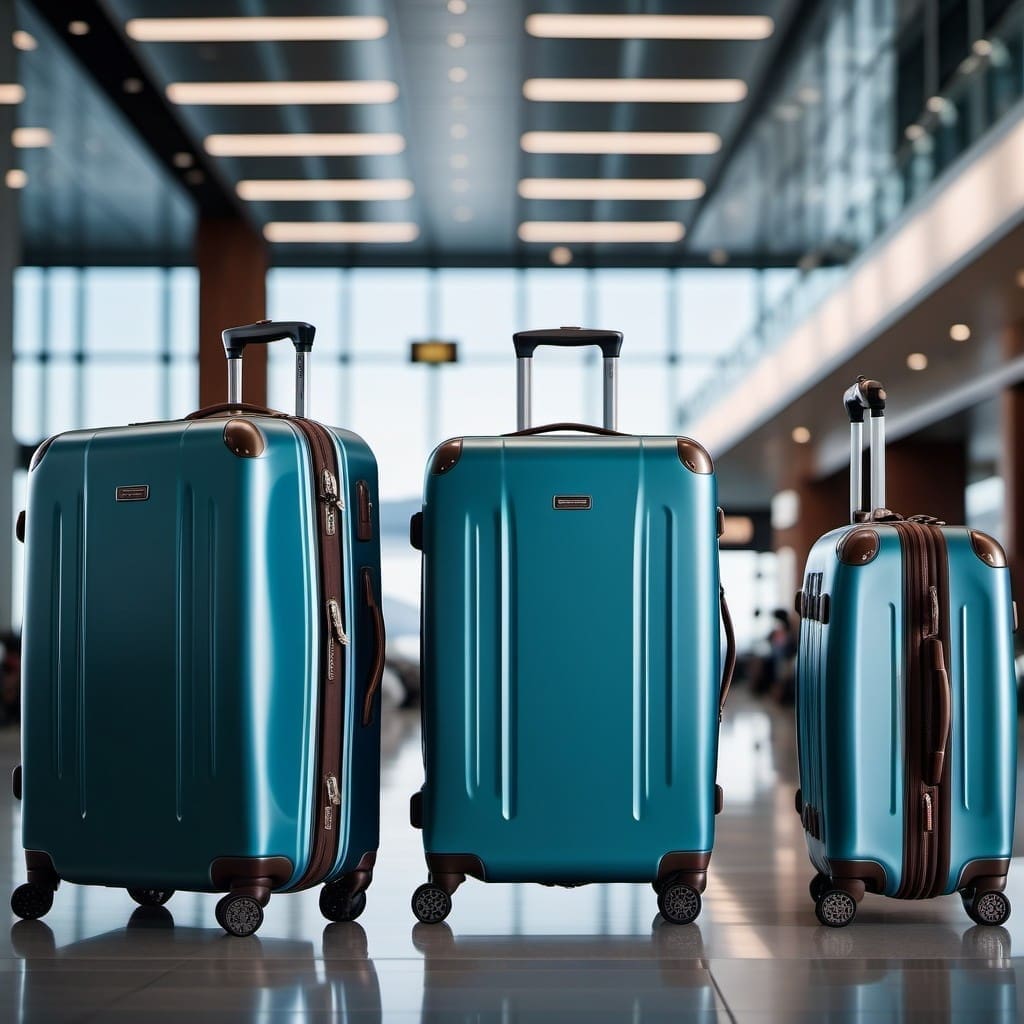Checked Luggage Limits often dictate how we pack for a flight. Have you ever wondered why airlines are so strict about these dimensions? Understanding their reasons can help us navigate the complex rules of air travel and avoid last-minute fees or repacking at the airport.
Understanding the size and weight restrictions for checked luggage can help ensure a smoother and more efficient journey.
The answer lies in a complex web of safety regulations, operational requirements, and financial considerations.
Understanding these limitations is important for both passengers and airlines alike.
Curious to uncover the rationale behind these rules and how they impact your travel experience?
Key Takeaways
- Airlines restrict luggage size for safety, efficiency, and cargo space optimization.
- Oversized bags disrupt weight distribution, require special handling, and challenge cargo hold efficiency.
- Exceeding limits poses safety risks, impacts flight stability, and disrupts operational efficiency.
- Compliance with industry standards ensures safety, optimal weight distribution, and efficient baggage handling.
Reasons for Checked Luggage Limits.
Checked luggage limits are put in place by airlines for several important reasons. Airlines enforce limits on luggage dimensions to guarantee efficient use of cargo space within the aircraft. By controlling the size of checked baggage, airlines can optimize the allocation of space for both passenger bags and commercial cargo, ultimately enhancing the overall efficiency of the flight.
Additionally, these size restrictions help prevent overloading the plane and maintain a safe center of gravity during travel, essential for the safety and stability of the aircraft in flight. Standardizing the dimensions of checked luggage also enables airlines to accommodate a consistent amount of baggage per passenger, contributing to a smoother boarding process and faster turnaround times for flights.
Impact of Oversized Bags on Airlines
Oversized bags pose significant operational challenges for airlines, impacting various aspects of their efficiency and safety measures. When bags exceed the allowed dimensions, airlines face:
- Cargo Hold Efficiency: Oversized bags are difficult to fit into designated cargo holds, leading to inefficiencies in loading and unloading processes.
- Weight Distribution: Large bags can disrupt the balance and weight distribution of the aircraft, potentially compromising its stability during flight.
- Baggage Handling Procedures: Excessively large bags may require special handling procedures, increasing the workload for baggage handlers and causing potential delays.
- Safety Regulations: Limiting checked luggage dimensions helps airlines comply with safety regulations, ensuring the safety of passengers and crew.
- Damage Prevention: By adhering to baggage limits, airlines can prevent potential damage to baggage handling equipment, maintaining operational effectiveness and reducing maintenance costs.
Safety Concerns With Exceeding Limits
Exceeding the designated luggage dimensions can pose serious safety concerns for both airline operations and passengers. When checked luggage exceeds size limits, it can lead to safety risks during the loading and unloading processes. Baggage handlers may struggle to maneuver oversized bags, increasing the likelihood of potential injuries.
Airlines impose these size limits not only to prevent damage to luggage but also to maintain efficient operations of baggage handling systems. Oversized luggage can disrupt the weight distribution within the aircraft, impacting flight stability. By complying with checked luggage dimensions, airlines maintain safety standards and operational efficiency.
It’s vital for passengers to adhere to these limits to avoid compromising the safety of both airline staff and fellow travelers. Remember, following the rules regarding luggage size is essential for a smooth and safe travel experience.
Efficiency of Luggage Handling
To ensure smooth operations and timely departures, airlines emphasize the importance of efficient luggage handling processes. When it comes to baggage, size restrictions play a critical role in maintaining efficiency throughout loading processes. Consider the following aspects:
- Weight Distribution: Specific size limits on checked luggage aid in optimizing weight distribution within the aircraft, ensuring balanced flights.
- Damage Prevention: Limiting the size of bags reduces the risk of damage during loading and unloading operations, safeguarding passengers’ belongings.
- Cargo Holds: Well-defined dimensions help maximize space in cargo holds, enabling efficient packing and utilization of available storage areas.
- Baggage Handling: Standardized luggage sizes streamline baggage handling procedures, enhancing overall efficiency in airport operations.
- Loading Processes: By adhering to size restrictions, airlines can expedite the loading and unloading processes, contributing to on-time departures and arrivals.
Efficiency in luggage handling not only benefits airlines but also enhances the travel experience for passengers by minimizing delays and ensuring the safe transport of belongings.
Compliance With Industry Standards
Limiting checked luggage dimensions in accordance with industry standards guarantees airlines adhere to safety and operational efficiency guidelines established by organizations like IATA and ICAO. By setting specific size restrictions for checked bags, airlines make sure that each piece of luggage fits appropriately within the cargo hold, preventing any interference with aircraft weight distribution.
Following industry standards not only enhances safety but also streamlines baggage handling processes, optimizing space within aircraft compartments. Regulated luggage dimensions reduce the risk of damage to baggage during loading and unloading, minimizing potential safety hazards.
Consistent adherence to these standards enables airlines to maintain a balanced and secure load on the aircraft, promoting overall flight safety and performance. Hence, compliance with industry standards regarding checked luggage dimensions plays an important role in ensuring the safety of passengers and crew, as well as the efficiency of aircraft operations.
Conclusion
Basically, airlines restrict checked luggage dimensions to maintain smooth operations. Remember, when you adhere to the rules, you’ll be soaring without any baggage weighing you down.
So, next time you pack your bags for a trip, keep in mind the saying, ‘Don’t throw caution to the wind’ to guarantee a stress-free journey. Safe travels!














